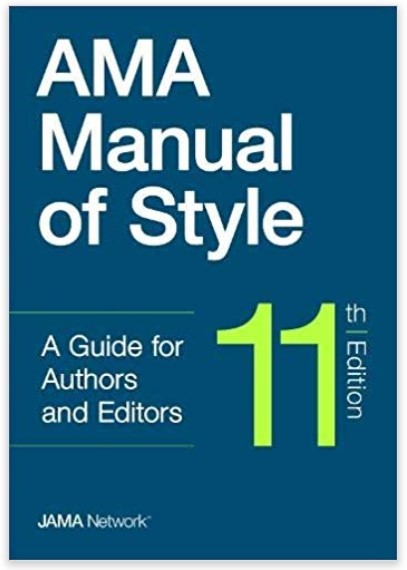When acquaintances learn that I am an
editor, a common response is “I better watch what I say around you.” I would
like everyone to watch what they say around me at all times, but for reasons
having nothing to do with my career.
Still, that response is often followed by curiosity and questions. Giving advice is one of life’s simple pleasures. Giving advice is even better when someone actually asks for it. Is any writing more concentrated than an advice column? It’s the written equivalent of a shot of absinthe but better for you. My advice hero is Carolyn Hax, and I have also enjoyed Emily Yoffe and Miss Manners. I won’t claim to belong in their illustrious company but I do have the AMA Manual of Style. I don’t think they do.
I’ve selected questions from the last year
whose answers can get you leafing through the manual. As you read these and
have questions in turn of your own, remember that, unlike me, the AMA Manual of Style is always there for
you.
Dear AMA Style Manual Guru,
I am indexing binomial organism names and
have come up with a shortcut that separates the genus from species when the
genus is otherwise repeated. Can you help me justify this decision?
Rogue Editor
Dear Rogue Editor,
We are all learners here and I object to
the hierarchy implied when you refer to me as a guru. In the interest of
collaboration, please call me Sir.
AMA Style Manual Guru
Dear Sir,
I am indexing binomial organism names and
have come up with a shortcut that separates the genus from species when the
genus is otherwise repeated. Can you help me justify this decision?
Rogue Editor
Dear RE,
No. See 13.1.1, Alphabetization and Sorting.
Dear Sir,
I’m using an acronym that relies on
irregular capitalization when spelled out. I am worried that readers will feel
misled or as if the acronym is too forced. How can I handle this
discrepancy? Asking for a friend.
Dear Nameless,
You worry too much. Readers will not question the acronym if they follow 10.6, Acronyms and Initialisms. You should too. Or your friend should. Look, you both should. An irregular use of capitalization will be harder for readers to follow than standard capitalization. By the way this column has a word count, so let’s dispense with salutations and sign offs and stick with Q and A.
Q: If you have a hyphenated compound in a
page heading, do you capitalize the second half of the word: First-Line
Therapy? or First-line Therapy?
A: Because “first-line” appears in Webster’s as a specific term, the AMA Manual of Style indicates that the “l” would be lowercase. See 10.2.2, Hyphenated Compounds. When each part of a hyphenated term carries equal weight, capitalize the initial letter of both words. I always enjoy capitalization questions. Keep them coming.
Q: Even though you prefer capitalization
questions, I have a question about pluralization. In a world in which most
signage offends grammarian sensibilities (Free Kitten’s to a Good Home), an
editor (not unlike you) noted that my paper used “too many and’s.” How should I
respond to this editor?
A: See if you can use serial commas instead of successive and’s and look up 9.6, Plurals of Symbols, Letters, Numbers, and Years. Then thank your editor for helping your article attain clarity for readers. You’re welcome.
Q: Why can’t I use the numerical
expression of ordinal numbers? They keep getting edited out and I think they
are clear and that the visual effect communicates more quickly than spelled
ordinals.
A: This is the third (not 3rd) time you’ve asked. I know it sounds harsh but it’s for your own good and someday you’ll thank me. You just can’t. Now stop asking. Numeric expressions of ordinals may be jarring and interrupt the flow of text (see 19.2.5, Ordinals).
Q: I often see the pronoun “one” presented
as the number. What’s this whole world coming to?
A: True, the pronoun should be spelled out (19.2.3, One Used as a Pronoun). You may see someone interpret a pronoun as the countable “1,” and it may get into print even when the pronoun precedes a prepositional phrase (“1 of us” for “one of us”). The only assurance I can offer is that no one was harmed in the publication of that phrase and the sun still rises and sets each day.
Q: “Two weeks of symptoms is expected” or
“Two weeks of symptoms are expected”?
A: Smart money is on the first choice. A unit of measure uses a singular verb. See 9.2, Collective Nouns. Noun phrases is are funny that way. Your ears may have to adjust to this new knowledge.
Q: I have a father in law problem. He
constantly undermines me. My wife is his only daughter, and when I am at the
grill (my specialty!), he maneuvers into my area so he can flip the burgers
himself. Then he claims that I don’t know how to grill. How can I get him to
stop?
A: You have a father-in-law problem. See Hyphen, 8.3.1. —Timothy Gray




